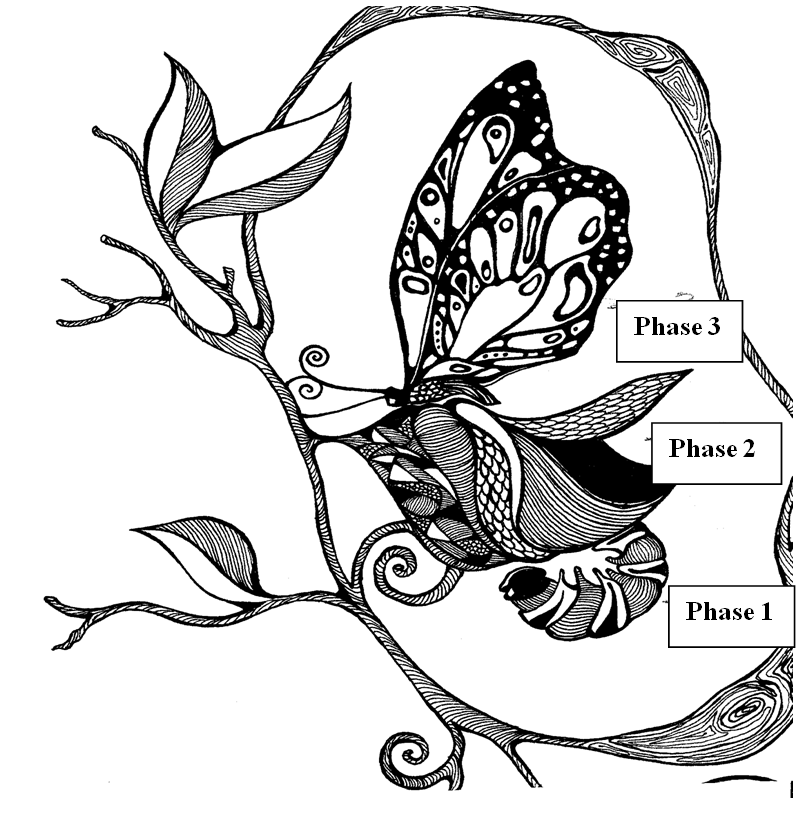A Coaching Model Created by Shobha Naidu
(Intercultural Coach, INDIA)
 My model is based on an analogy with the Chrysalis. It best represents for me the process of unfolding and transformational growth. From the caterpillar to the butterfly I see a clearly defined developmental process that can be incorporated into my coaching practice. The premiss on which this model is constructed, lies in the understanding, that just as the caterpillar and the chrysalis ‘contain’ the butterfly, so too does the potential for growth and change lie within the client, and is achieved through a process of insight, adaptation and change.
My model is based on an analogy with the Chrysalis. It best represents for me the process of unfolding and transformational growth. From the caterpillar to the butterfly I see a clearly defined developmental process that can be incorporated into my coaching practice. The premiss on which this model is constructed, lies in the understanding, that just as the caterpillar and the chrysalis ‘contain’ the butterfly, so too does the potential for growth and change lie within the client, and is achieved through a process of insight, adaptation and change.
Three distinct phases can be seen in this model. These are:
1. The ‘Caterpillar’ phase
is action focused and the client is intent on the “doing”. The coachin thisexploratory stage supports the client to gain insight about the areas that need to be developed and changed, and to recognize that this present external behavior is not working for him / her. The focus is on the client’s interactions, activities and reactions to what is going on around him. The coach is attentive to what the client does and says and to his external actions, which are the most visible to others. Getting the client to take cognizance of this aspect of his behavior is crucial in terms of what needs to be changed, and the expected outcomes.
The caterpillar’s initial growth is phenomenal and is driven by a compulsive, devouring phase that can be categorized as external and action oriented.
2. The ‘Chrysalis’
phase enables the coach to support the client who has gained awareness about his behaviors especially those that are not serving him. In this awareness building and letting go phase, the client pays greater attention to adapting his behavior to meet specific challenges. For the client, developing an awareness and understanding of the impact his behavior and communication is having on people around him, is crucial to taking the first ‘corrective’ measures towards reaching his goal. In this phase “doing” and “being” become congruent and an inner process of reflection on values, motivation and goals is triggered. For the client, the alignment of his goals with his values results in greater commitment to change.
Marshall Goldsmith terms this the “dumb phase”. He writes that transition and change require a process of introspection and awareness during which the client experiences the need to step back, and allow for change to happen. He compares this to wine which has to mature before it can be drunk.
From a stage of intense activity, the caterpillar retreats, so to speak, and forms a chrysalis. This is a seemingly non active and “dumb” phase in preparation for the change that is to take place.
3. The ‘Butterfly’ phase
The clienthas released non serving behaviors and attitudes, and with greater awareness is able to find his own solutions. The client moves from significance to lightness and is empowered to change. The client becomes the catalyst for his / her own change.
The butterfly‘s joyful and free flight best epitomizes the clients’ transition and progress from a “lower” but necessary transactional stage, to a “higher” stage of real transformation.